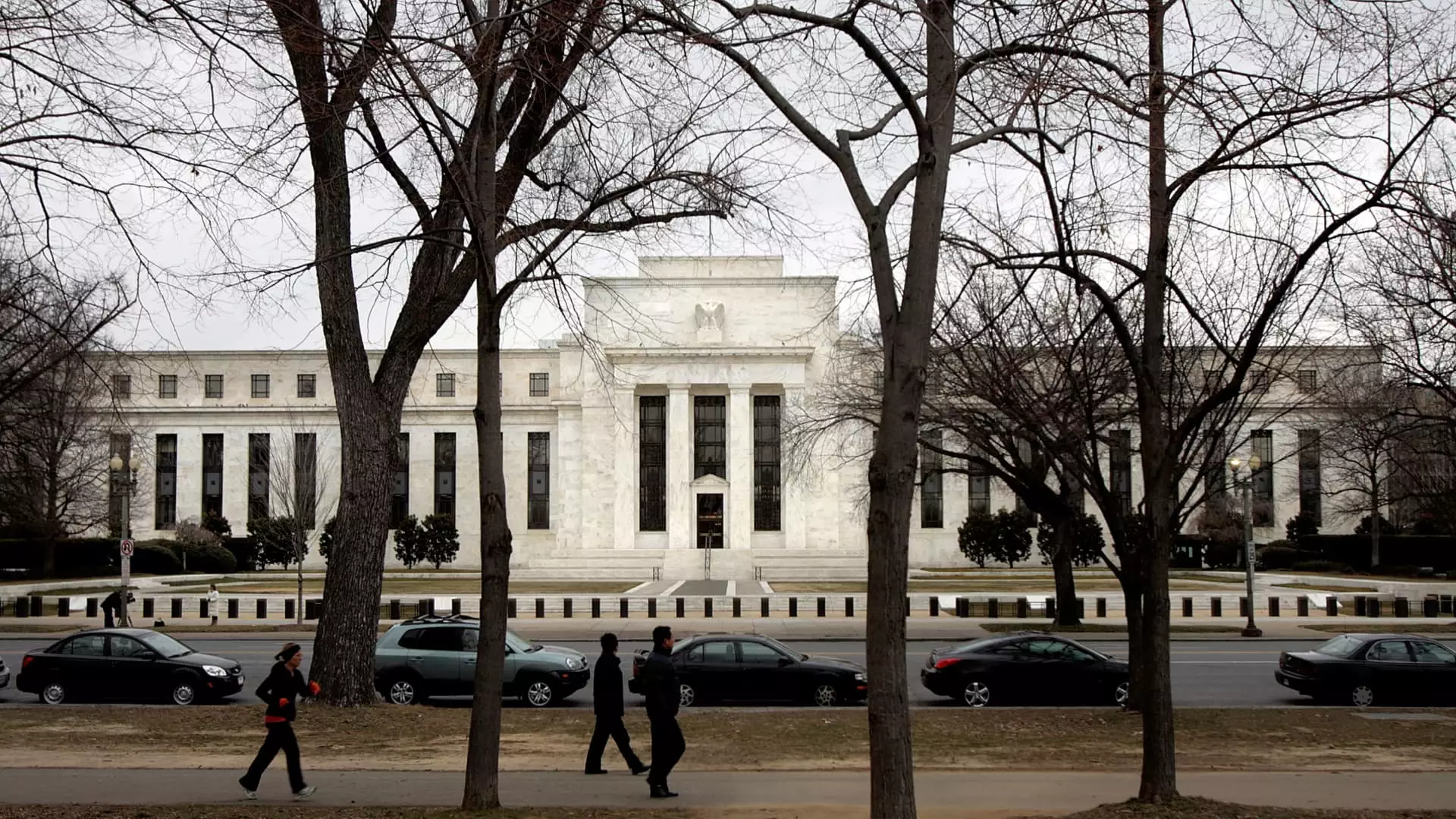On Wednesday, the Federal Reserve reaffirmed its decision to maintain the existing interest rates, even as inflation stabilizes above the target rate of 2%. This decision comes on the heels of significant economic shifts that include a substantial reduction of the benchmark interest rate by one percentage point last year. The backdrop of this announcement featured comments from President Donald Trump, who expressed his intent to pressure the Fed into reducing interest rates immediately. The latest insights from the CNBC Fed Survey indicate that expectations are tempered; financial analysts foresee only two cuts by the end of the year—identical to the forecasts laid out by Federal Reserve officials.
Michele Raneri, vice president and head of U.S. research and consulting at TransUnion, pointed out that while inflation concerns have lessened, they remain a lingering issue. Consequently, the anticipated number of rate cuts may be fewer than previously expected. For consumers grappling with high prices and elevated borrowing costs, this news may not be conducive to relief, hinting at possible further challenges to the independence of the Federal Reserve.
Inflation has been a pressing problem since the onset of the pandemic, with price surges reaching levels unseen since the early 1980s. In response, the Federal Reserve implemented a series of interest rate hikes, elevating the benchmark rate to its highest point in 22 years. During his campaign, Trump emphasized the detrimental effects of inflation and high interest rates on the economy, labeling these factors as destructive forces in American society.
The federal funds rate is a critical component in the banking system, influencing how banks lend to one another overnight. Although this rate does not directly correlate to consumer borrowing rates, it plays a profound role in shaping the financial landscape, affecting borrowing and savings rates that consumers encounter on a daily basis. The recent uptick in interest rates has placed immense pressure on households, significantly increasing consumer borrowing costs.
Despite recent rate cuts from the Federal Reserve, experts like Greg McBride, Bankrate’s chief financial analyst, are skeptical about immediate relief for consumers. He suggests that the forthcoming reductions will not be substantial enough or frequent enough to alleviate the financial burdens faced by households.
A closer look at the consumer borrowing landscape reveals that most credit cards operate on variable interest rates that are closely tied to the Federal Fed’s benchmark. Since the start of the rate hike cycle, the average credit card interest rose sharply from 16.34% in March 2022 to over 20%, approaching historic highs. Although the central bank’s rate reductions might lead to a decline in Annual Percentage Rates (APRs), they are unlikely to return to levels that provide significant relief.
Matt Schulz, chief credit analyst at LendingTree, warns consumers against expecting the Federal Reserve to provide rapid assistance against high interest rates anytime soon. For those unsure about how to manage their high-interest credit card debts, Schulz suggests strategies such as consolidating debts with personal loans or considering interest-free balance transfer credit cards, which he describes as “absolute lifesavers.”
In the housing market, prospective buyers face diminishing purchasing power, predominantly due to inflation and previous Federal Reserve policies. Currently, the average rate for a 30-year fixed mortgage hovers just above 7%. Despite expectations that mortgage rates will stabilize in the 6% range throughout the year, most homeowners with fixed-rate mortgages will not experience changes unless they decide to refinance or sell their properties.
Auto loans present another challenging scenario for consumers. Although the rates on these loans are fixed, rising car prices coupled with elevated interest rates have inflated monthly car payments, making them less accessible. Currently, the average rate on a new five-year auto loan stands at around 5.3%. Joseph Yoon from Edmunds notes that affordability challenges appear persistent, given that the average price of new vehicles remains near $50,000.
Federal student loans generally feature fixed rates, so their borrowers are somewhat insulated from dynamic changes in Fed policy. However, new undergraduate borrowers for the 2024-25 academic year face a rate increase to 6.53%, up from the previous 5.50%. Interest rates for future academic years will depend partly on the performance of 10-year Treasury notes.
While deposit rates are not directly influenced by the Federal Reserve, they are still interconnected with changes in the federal funds rate. In recent years, high-yield savings accounts have flourished, offering the highest returns in over a decade. Schulz suggests that for savers, the latest announcements from the Fed could be advantageous, marking a prime opportunity to explore options for high-yield savings accounts.
As consumers face the dual pressures of rising costs and high borrowing rates, the Federal Reserve’s current strategy may not yield the relief many hope for anytime soon. The evolving landscape demands that individuals take proactive measures to navigate their financial options while remaining aware of the broader economic implications at play.

